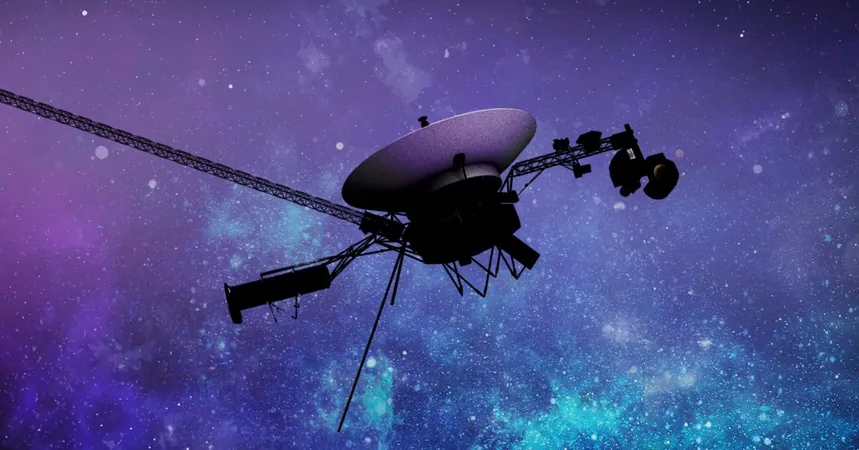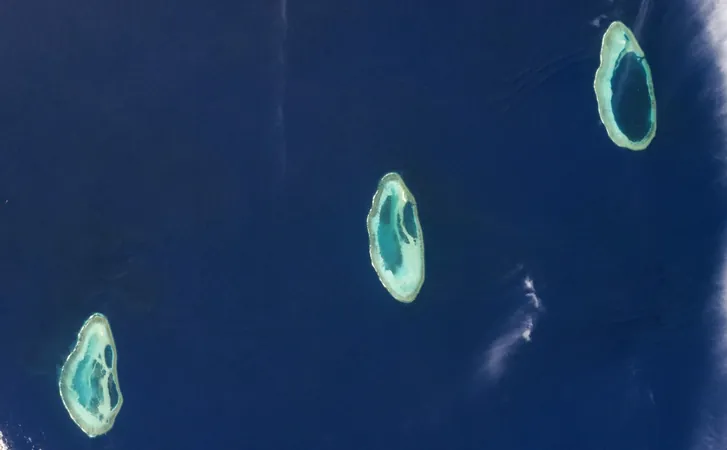
Voyager 1 Switches to Backup Communication After Over 40 Years – What This Means for Interstellar Exploration!
2024-11-02
Author: Daniel
Introduction
NASA recently announced a significant development concerning Voyager 1, the farthest spacecraft from Earth, as it was transitioned to a lower-powered backup transmitter after a fault protection system unexpectedly activated. The switch marked the first time in over four decades that this backup system has been used, raising concerns about the aging spacecraft’s health and future communications.
The Fault Protection System
On October 24, the Voyager 1 mission team, managed by the Jet Propulsion Laboratory (JPL) at Caltech, reestablished contact with the iconic probe after a brief signal interruption believed to be linked to the activation of its fault protection system. This system is designed as a safeguard, automatically shutting down non-essential functions to protect the spacecraft when anomalies occur, and it relayed critical data back to Earth for analysis.
Sequence of Events
The sequence of events began on October 16, when engineers instructed Voyager 1 to activate a heater. Surprisingly, the fault protection system was triggered, leading to a loss of communication a couple of days later, as no signals were received since October 18. Fortunately, the flight team was able to pinpoint the issue, deducing that the spacecraft had reduced power output which inadvertently changed the frequency of its primary X-band transmitter.
Backup Transmitter Activated
Alarmingly, this wasn’t an isolated incident. The very next day, communication signals again halted, leading to further activation of the fault protection measures. Voyager 1 was subsequently switched to the secondary S-band transmitter—a backup receiver that operates at a lower power level and is less robust than its primary counterpart. Remarkably, this S-band transmitter hadn't been used since 1981, a whopping 43 years ago, yet it was still operational, showcasing the durability of the spacecraft's systems.
Voyager 1's Mission
Voyager 1 was launched in 1977 as part of a grand tour of the solar system that leveraged a rare alignment of the outer planets. Having successfully transmitted vital data from its encounters with Jupiter and Saturn, the probe has since ventured into interstellar space, investigating the outer edges of the Sun's influence and beyond.
Ongoing Challenges
Given Voyager 1's advanced age, the recent communication problems are not entirely unexpected. Earlier this year, the spacecraft experienced a separate malfunction wherein a critical piece of hardware intended for scientific data encoding sent back garbled information. As Voyager 1 continues its historic journey, further issues are likely, leading mission controllers to exercise caution as they determine the root cause of the current fault activation.
Implications for Future Exploration
As the mission continues, the implications of these malfunctions stretch beyond just VOYAGER 1. This mission is emblematic of human curiosity and our quest for knowledge about the universe. The two-way communication delay of nearly two days means that any troubleshooting and recovery efforts could take weeks, but the dedicated Voyager team remains committed to ensuring this pioneering spacecraft continues its groundbreaking work for as long as possible.
Conclusion
Voyager 1’s tale is one of resilience in the face of adversity, an inspiration for future missions that will continue to unlock the mysteries of space exploration! Keep watching the skies; the journey is far from over!



 Brasil (PT)
Brasil (PT)
 Canada (EN)
Canada (EN)
 Chile (ES)
Chile (ES)
 Česko (CS)
Česko (CS)
 대한민국 (KO)
대한민국 (KO)
 España (ES)
España (ES)
 France (FR)
France (FR)
 Hong Kong (EN)
Hong Kong (EN)
 Italia (IT)
Italia (IT)
 日本 (JA)
日本 (JA)
 Magyarország (HU)
Magyarország (HU)
 Norge (NO)
Norge (NO)
 Polska (PL)
Polska (PL)
 Schweiz (DE)
Schweiz (DE)
 Singapore (EN)
Singapore (EN)
 Sverige (SV)
Sverige (SV)
 Suomi (FI)
Suomi (FI)
 Türkiye (TR)
Türkiye (TR)
 الإمارات العربية المتحدة (AR)
الإمارات العربية المتحدة (AR)